Prototypes of the future 2030
System-level transformation needs solid science, more information, brave experiments, and examples of how we will design, manufacture, use, and recycle textiles and garments in the year 2030.
Through these prototypes we wish to inspire and invite all stakeholders in the textile and fashion field to take part in this transformation towards a more balanced and sustainable system. The work of the FINIX project will lay the foundations for a green textile industry in the future.
Prototypes
Design experimentation has sought to demonstrate how the lifetime of textiles can be extended through skillful design and reconstructing old garments into new ones or through recycling textile waste into new fibres, yarns and garments.
Research
Collaboration between different research disciplines will enable the building of a new textile and fashion system; one which is more transparent and resource wise. Communication with the industry is also essential to be able to apply scientific knowledge to real-life cases.
About
Our aim in the FINIX project is to show the way towards system-level transformation in the textile and fashion field. Therefore, we wanted to prototype futures garments and imagine the system around them, which could be a reality in 2030. Our example shows that to build a new sustainable textile future, scientific knowledge and design skills need to be combined with wide-ranging collaboration.
In the future, garments will be designed for extended use and to be repairable and recyclable. New design strategies will focus on extending product use time through better quality control. They will also aim for reusable garments which can be sold in several cycles, and focus on upcycling old garments into new fashion items. Data can be collected throughout supply chain, and this information can be used to promote more sustainable design choices when purchasing garments. New technologies that enable textile waste identification and recycling will help close the material loop and move towards a circular economy. Upcycling textile waste into new yarns will substitute the use of virgin materials. Transparency can be created throughout the supply chain by using new data tools. A code that opens to give this information can be printed on garments. A better system level balance can be reached by saving resources, avoiding waste, closing the material loop, and appreciating our garments once more.
PROTOTYPES
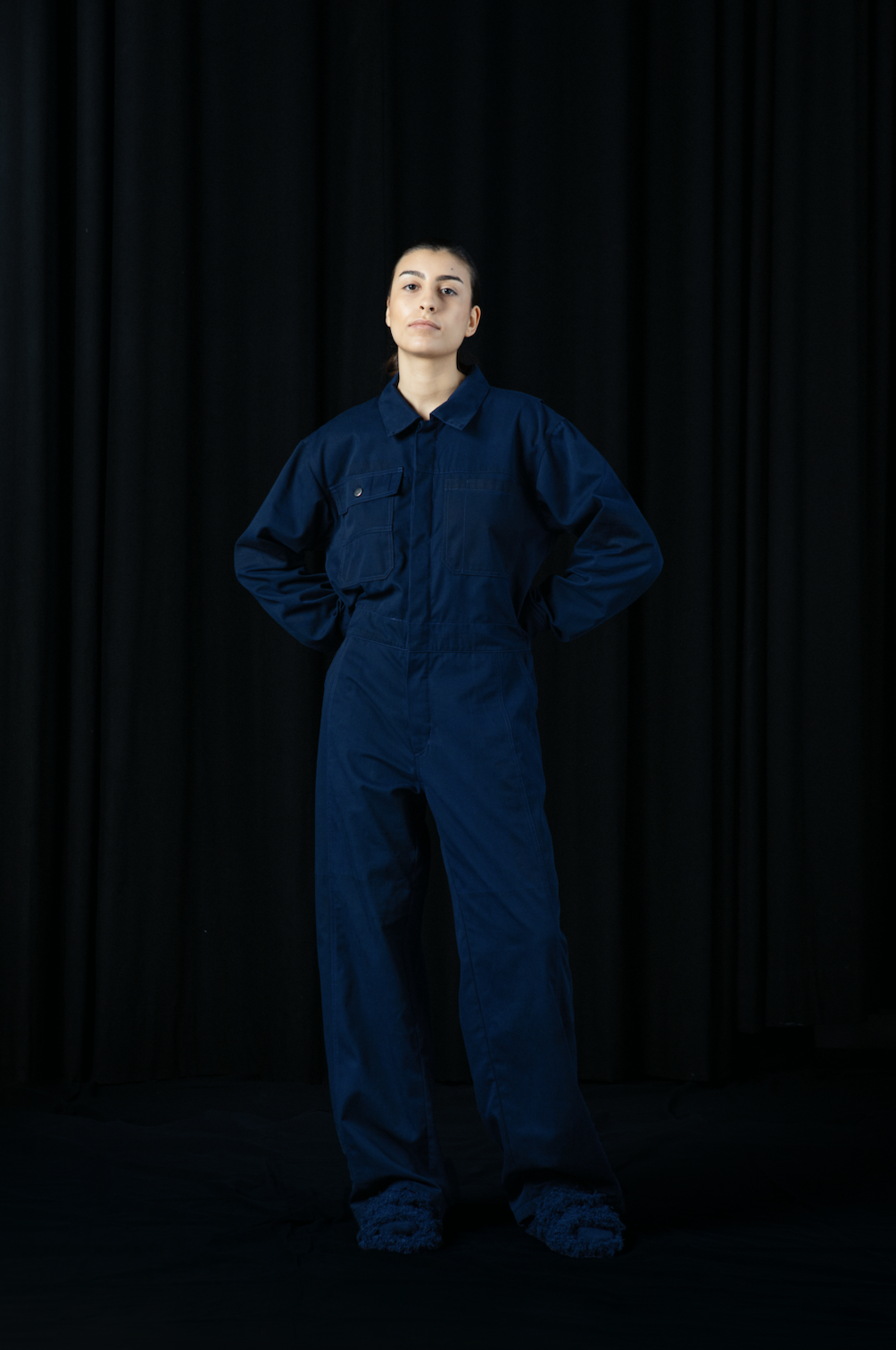

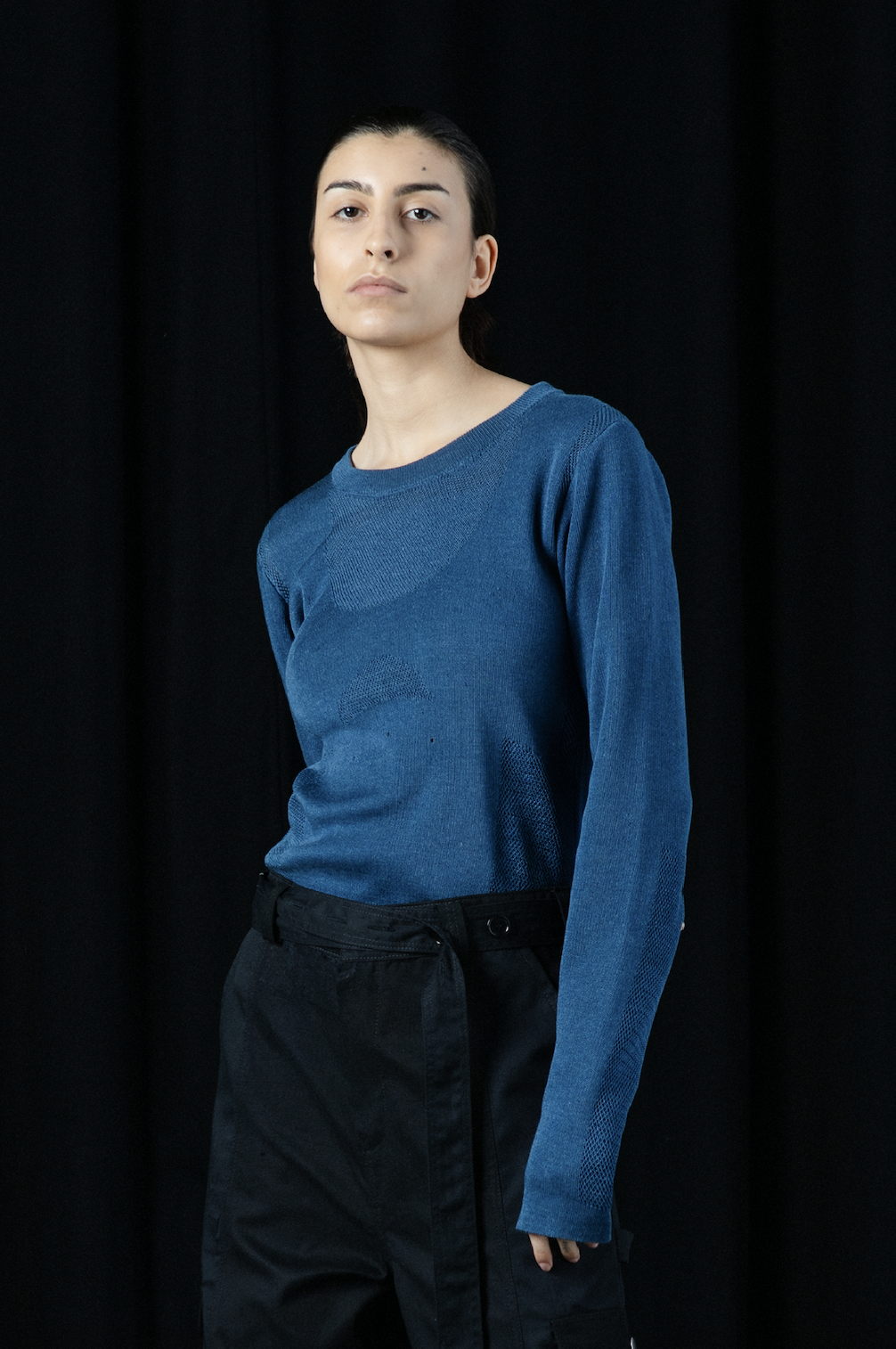
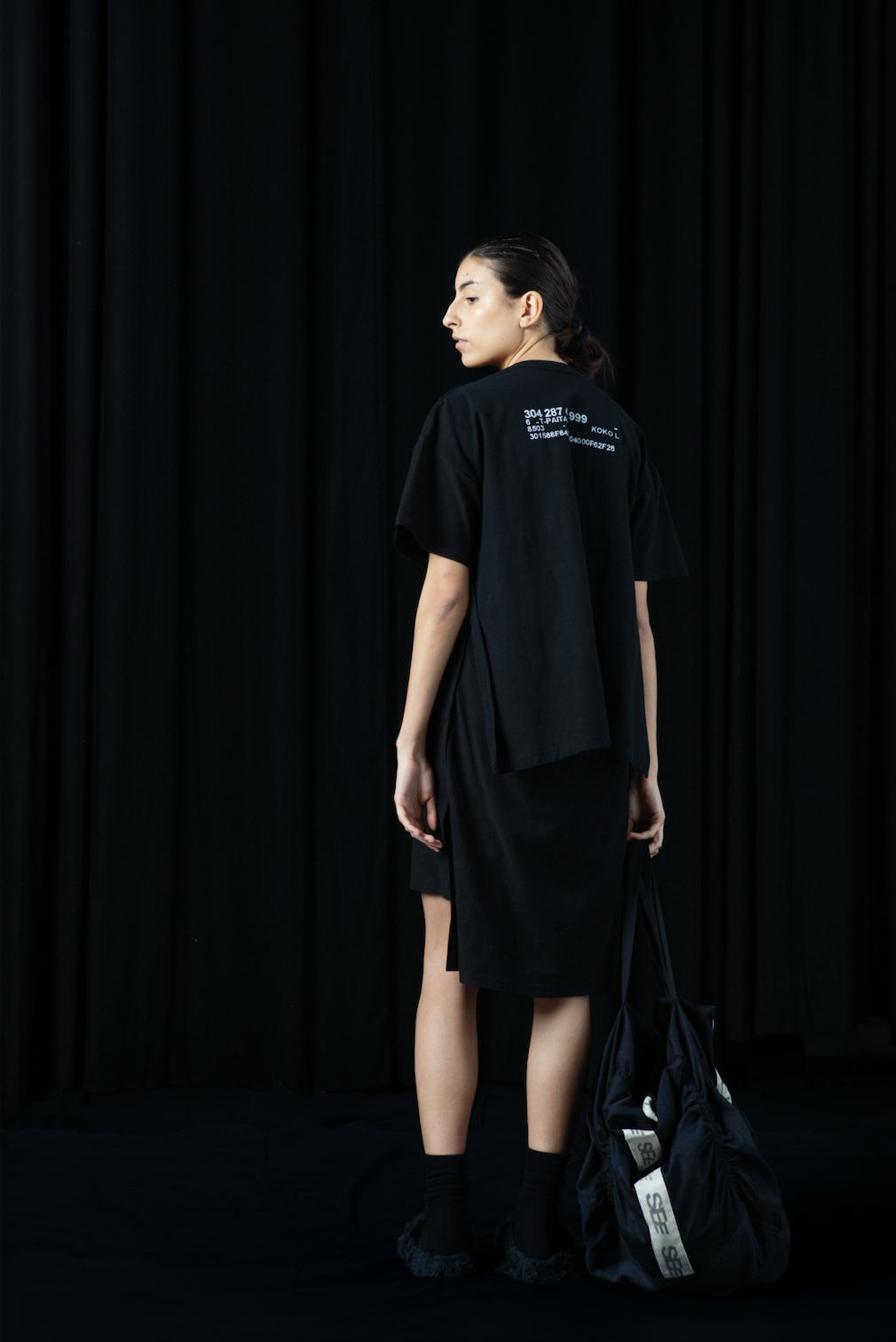
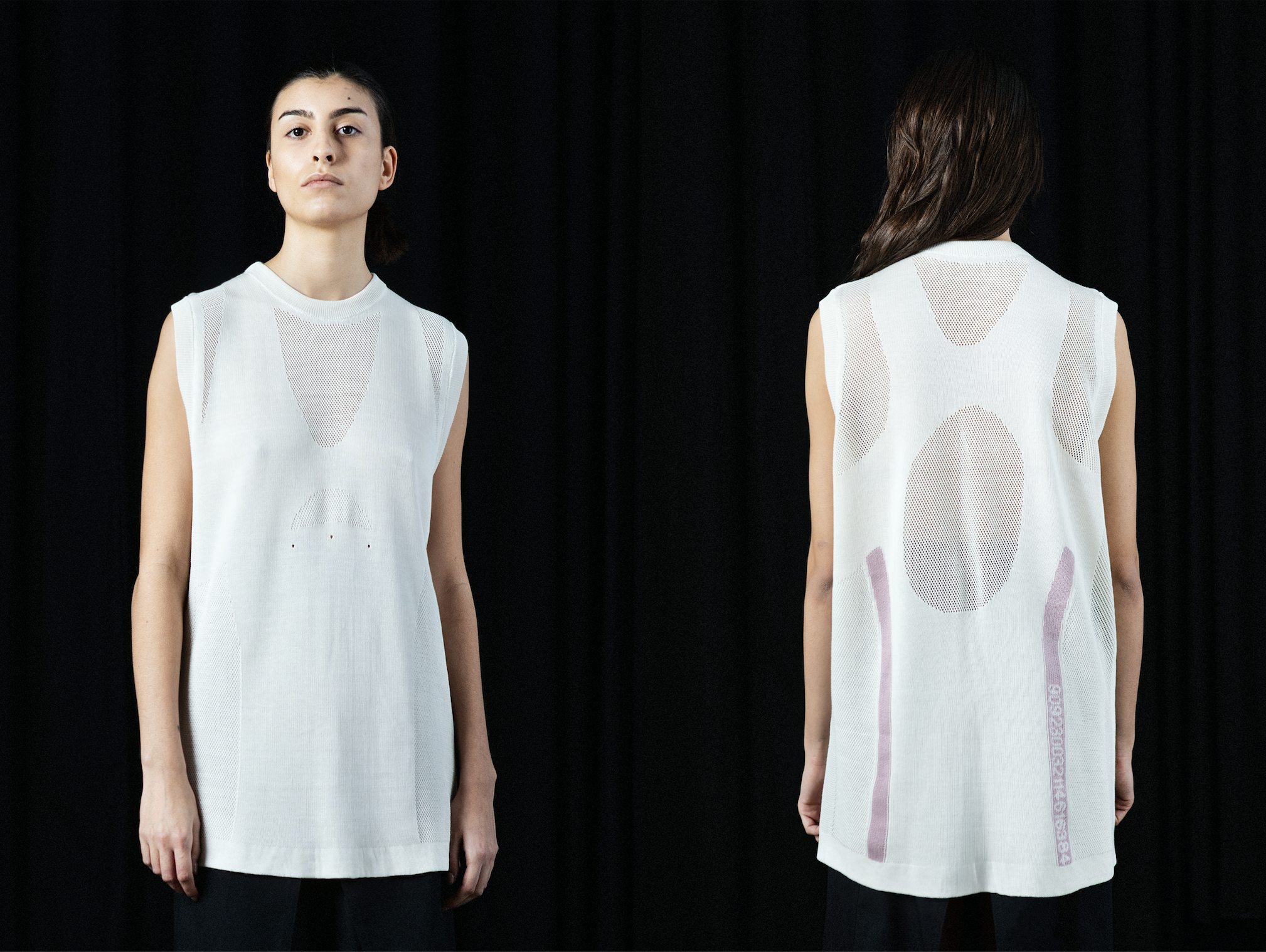
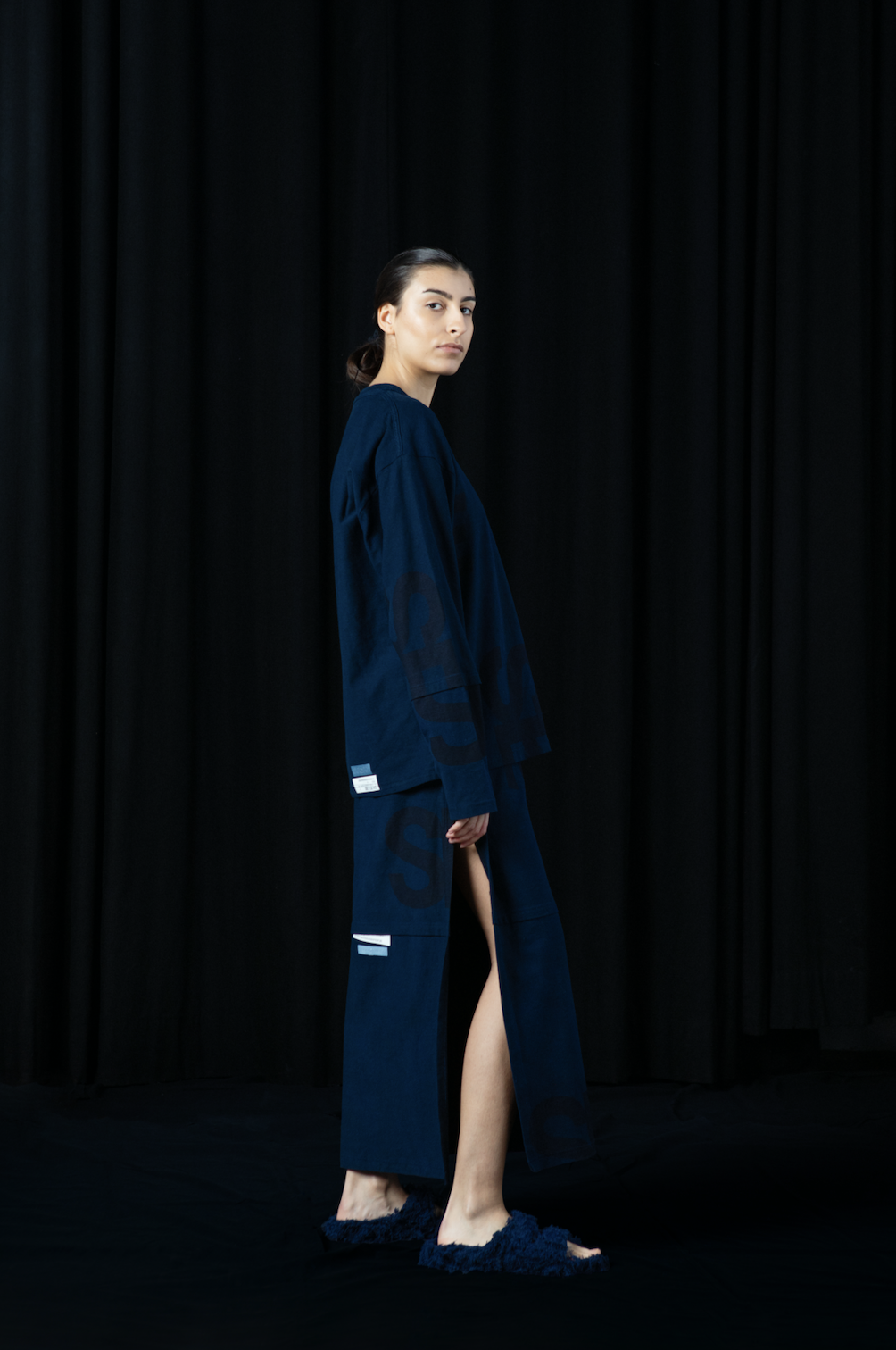
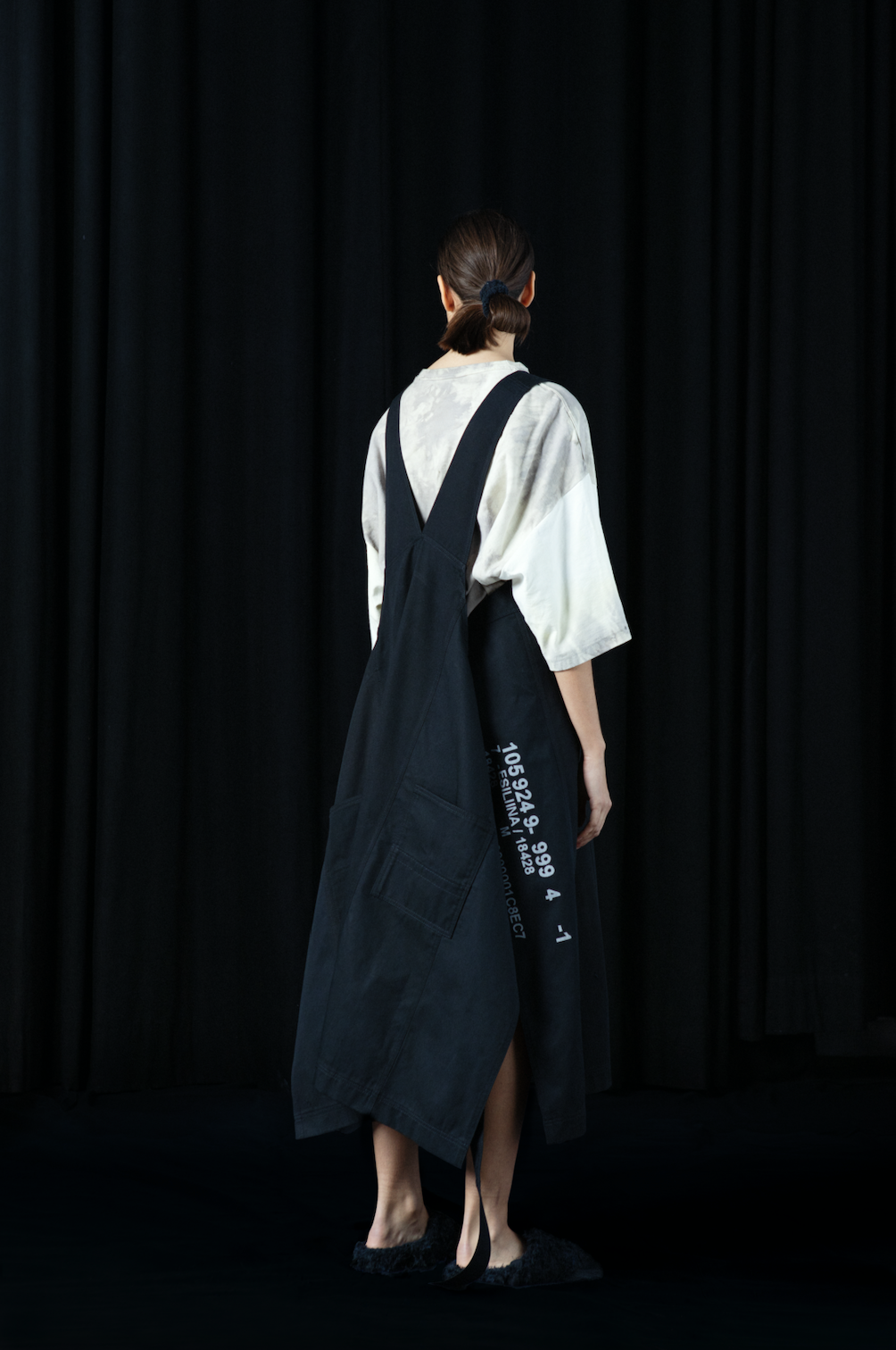
About the collection
Designers Elina Onkinen and Kasia Gorniak have created a ten-piece functional wear collection for the year 2030, made from re-purposed Lindström workwear and regenerated Ioncell yarn. Workwear staples such as overalls, cargo pants, an apron and a T-Shirt are re-designed to transition fluidly into everyday wear, suited to the dynamic lifestyles of the future. Functional elements are subtly engineered into the structures of the fully-fashioned knits. Various up-cycling processes are explored throughout, from deconstruction and reconstruction, to natural dyeing, to mending, to silk screen printing.
1. Overall
Overdyed and reconstructed from two old pairs of overalls, overdyed.
2. Cargo Pants and Shirt
Pants reconstructed from four pairs of old workwear trousers, overdyed.
Shirt plant-dyed and reconstructed from an old baker’s shirt.
3. Longsleeve Engineered Knit Top
Made from Indigo-dyed Ioncell yarn.
4. Apron Dress and T-Shirt
Dress constructed from four pairs of old worker trousers, overdyed and screen printed.
Plant-dyed T-Shirt reconstructed from one old T-Shirt.
5. Engineered Knit Tank Top
Made from regenerated hand towel Ioncell yarn.
6. T-shirt Dress and Duffel Bag
T-shirt dress reconstructed from three old T-Shirts, overdyed and screen printed.
Bag reconstructed from three old trousers, woven panel appliqué.
7. Longsleeve T-Shirt Dress
Dress reconstructed from four old T-Shirts, overdyed and screen printed.
RESEARCH
System-level changes need to be based on scientific information. Closing the material loop, investing in quality and longer garment use times, recycling, and upcycling are essential if we are to move towards sustainability. Life cycle assessment, transparency throughout the supply chain, and even new business thinking are also needed in this sustainability transformation.
Textile life cycle assessment
Susanna Horn
Finnish Environmental Institute (SYKE)
Lifecycle assessment can indicate the environmental impacts throughout the lifetime of garments; from fibre production, through textile manufacturing, to the use and even end of life stages of a garment.
Herbert Sixta
Aalto University
Recycling textile waste into new fibres and yarns can substitute the use of virgin materials in the textile industry.
Lifecycle of Lindström cotton towel roll
Anna-Kaisa Huttunen
Lindström Ltd
High quality extends the use time of the product and a service model can decrease the environmental impact of a product. Product strategies can also include repair and reuse of the product, or even recycling the material at the end of the product’s lifetime.
Future's design
Elina Onkinen & Kasia Gorniak
Aalto University
New sustainable design strategies are based on quality control, resource savings, and designing a garment to have several lifetimes. Furthermore, more accurate design and production can prevent surplus production, creating a better balance in the system.
Life cycle information management
Kirsti Cura
Aalto University
Textile supply chains must be much more transparent in the future. More information is needed if the system is to move towards a circular economy, and companies must take on more responsibility.
Textile tracking
Hannu Tanner
VTT
Textile tracking systems are needed to enable the identification of all the chemicals used in textile production. This information will enable us to calculate the environmental impacts of a product and will promote textile circulation.
